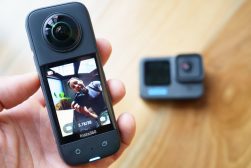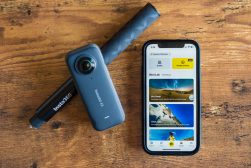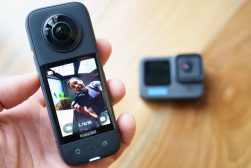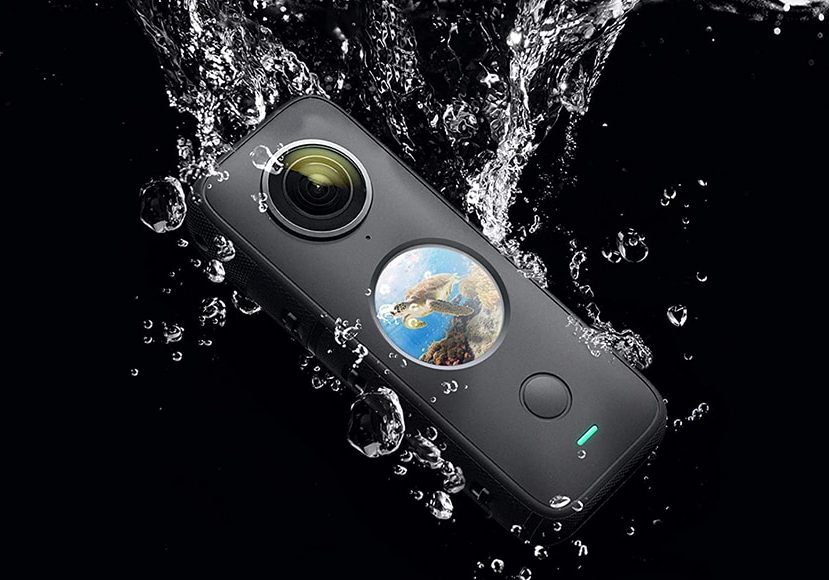
Best 360 Camera for Real Estate, Live Streaming, Virtual Tours & More
Want to make your video stand out? A 360-degree camera captures footage all around you for virtual tours, skiing videos, real estate, live streaming and more.
Camera Gear Guides | Camera Guides | By Tania Braukamper | Last Updated: February 7, 2024
Investing in one of the best 360 cameras is a wise choice for photographers here in 2024.
A 360-degree camera helps you create something truly unique – your photos will stand out more and clients will be interested in your services.
They’re also a lot of fun! You can record everything around you with one button press, then select the shots you want to use later.
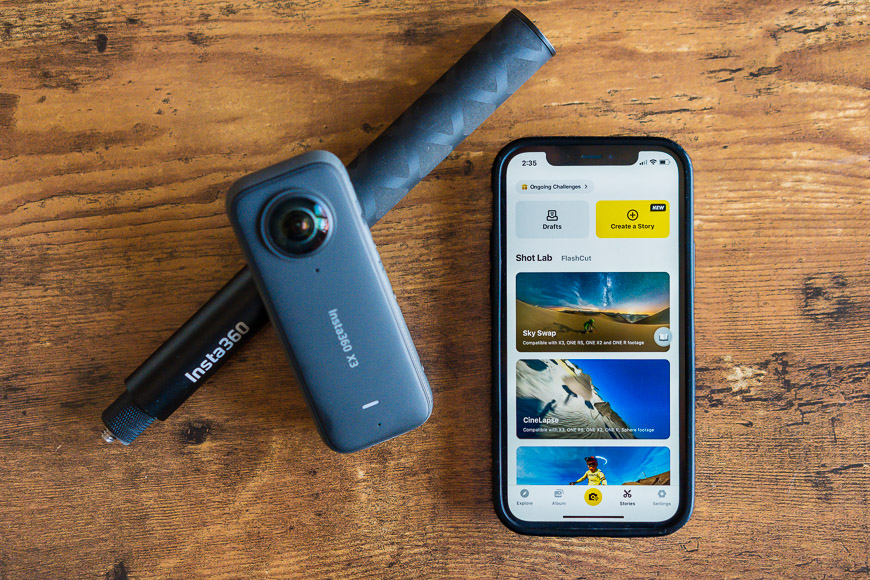
The ultimate waterproof 360° action camera provides endless creative possibilities. Fun, easy and incredibly addictive to use. Free companion app is also great.
360-degree footage can be viewed using specialist apps, or you can edit the content into regular video to be shared on social media.
The best 360 cameras feature automatic stitching, live-streaming, image-stabilization, 4k and 8k video resolution, slo-mo modes, Wi-Fi, GPS and more.
You can use 360 cameras for selfies with multiple camera angles, for immersive real estate virtual tours, live-streaming an office meeting, or for skiing down the side of a mountain.
Although you can use them for photography, your smartphone or other cameras are usually better – 360 cameras are best suited for spherical video.
Whatever the case, it’s important to know how to choose a 360 camera, which is where this guide will help.
Let’s take a closer look at the best 360 cameras of the year.
What is the Best 360 Camera in 2024?
| Image | Product | Features | |
|---|---|---|---|
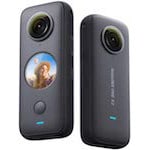 | Insta360 X3OUR #1 CHOICE |
| View Price → |
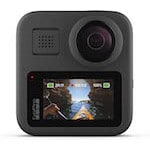 | GoPro MaxHIGHLY RECOMMENDED |
| View Price → |
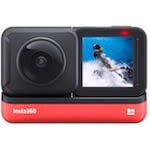 | Insta360 One RGREAT VALUE |
| View Price → |
 | Ricoh Theta Z1 |
| View Price → |
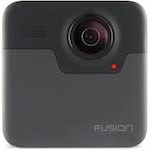 | GoPro Fusion |
| View Price → |
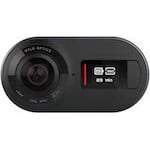 | Rylo iPhone + Android 360 |
| View Price → |
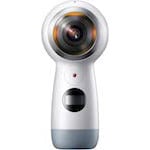 | Samsung Gear 360 |
| View Price → |
Insta360 X3
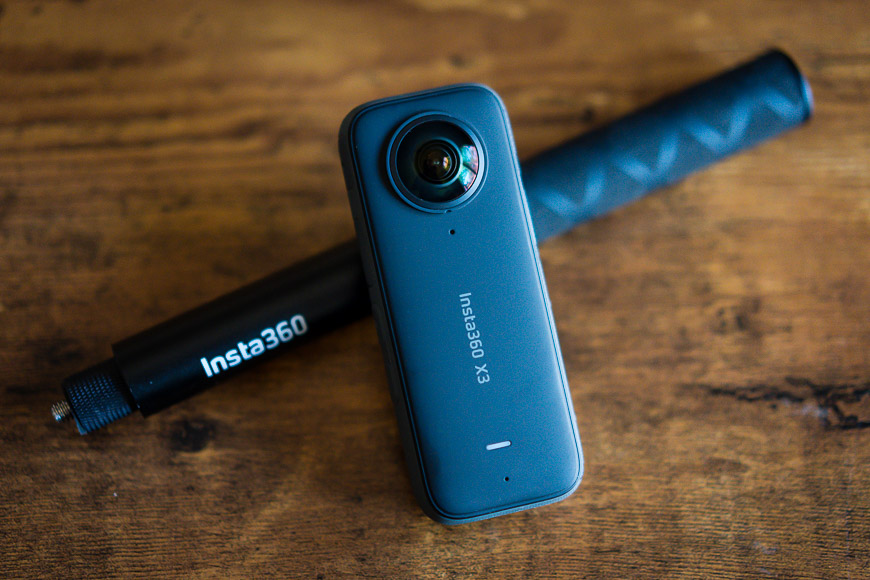
- Incredible image stabilization
- Excellent app for easy editing
- Fully waterproof
- 4 x microphones for spatial sound
- Invisible selfie stick
- 360 and single-lens capture
- Underwhelming sound quality
- Performance decreases in low light
Is the Insta360 X3 the best 360 camera in 2024? While that depends a little on your needs, we’d argue that it’s definitely a tough one to beat.
As well as offering superb quality 5.7K video recording, it boasts one of the best video stabilization systems around.
The proprietary FlowState Stabilization on the Insta360 X3 360 degree camera is the best on the market. You can take this little gem on bumpy adventures and still come back with buttery-smooth footage.
If you want to capture regular footage, simply switch over to Steady Cam mode. Instead of shooting in 360 degrees, it’ll shoot with one lens only.
You also get super slow-mo and hyper lapse video modes, further increasing creative options.
Another major advantage of the Insta360 X3 is the video editing app that comes with it. Capture footage in every direction, then easily choose which angle you want to keep later in editing.
The app also offers a bunch of AI tools that are both powerful and intuitive – it’s great to use them on your smartphone, so you don’t need to wait to be at home on your desktop computer.
The camera itself is rectangular and pocketable as well as durable. If you want to go diving with it, no worries: it’s waterproof up to 10 meters (32 feet).
It even has an invisible selfie stick built-in – hold the camera then watch the stick magically disappear in your edits!
If we have a few nitpicks, they’re that the image quality suffers in low light and that the audio quality could be better – the use of an external action cam mic like these would be a good sound quality upgrade.
That said, the Insta360 X3 definitely won’t fail to impress, and is our choice of the best camera made by Insta360.
Whether you want to use it as an action cam, for real estate 360 camera tours and videos, or to capture fun holiday adventures, it’s definitely one of the best 360 cameras on the market.
GoPro Max
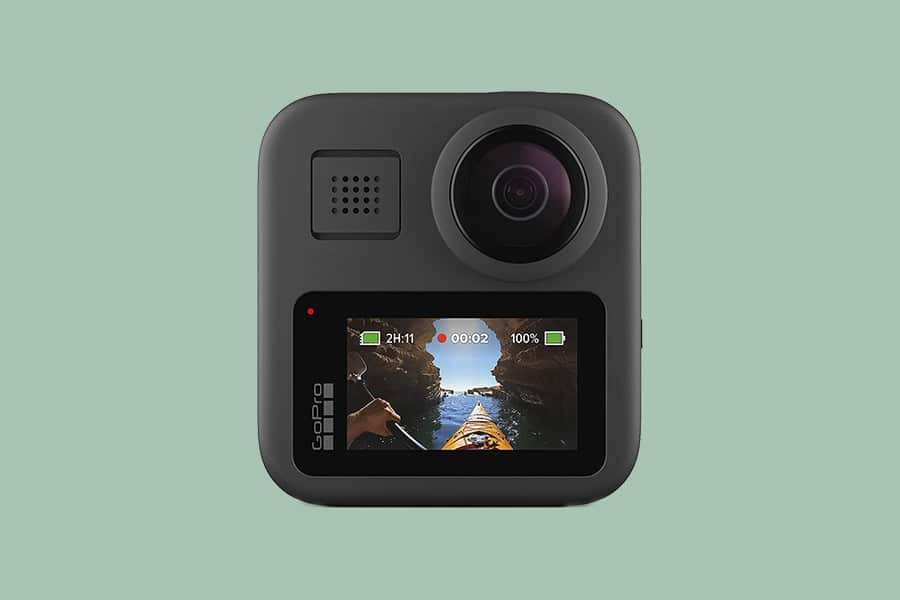
- Responsive touch screen
- Great stability
- 6 x microphones
- Waterproof
- 360 and single-lens capture
- Relatively expensive
- Inferior frame rate when in single-lens mode
While there are many worthy GoPro alternatives on the market in 2024, the GoPro Max more than deserves a place on our list of best 360 cameras.
This feature-packed camera offers all the bells and whistles you could want – though it does so at a slightly higher price than many of its competitors.
Unlike the Hero range of GoPro action cameras, the Max offers 360-degree recording at 5.6K as well as acting as a single-lens camera should you prefer to keep it simple.
That said, don’t expect the “Hero mode” of the GoPro Max to rival the quality of the Hero itself: adding the 360 functionality requires some sacrifices. Namely, no RAW format for stills and a lower video resolution and frame rate.
If spherical footage is your main game, however, the Max will serve you well – and there are plenty of other features to get excited about as well.
There’s the HyperSmooth stabilization feature, excellent horizon levelling, and commendable sound quality which is superior to other 360 cameras due to the inclusion of six internal microphones.
All that is packaged into a durable body that’s waterproof to 4.8 meters (16 feet).
And let’s not forget the PowerPano feature for easy, no-pan panoramas, and the TimeWarp stabilized time-lapse videos.
Like the Insta360 above, the GoPro Max is accompanied by an intuitive smartphone app that lets you edit videos with ease (though, comparing the two, we still think the Insta360 app wins out).
Overall, the GoPro Max has plenty to offer – and when it comes to the niche of 360-degree action cameras, the renowned GoPro brand stands its ground with good reason.
Insta360 One R
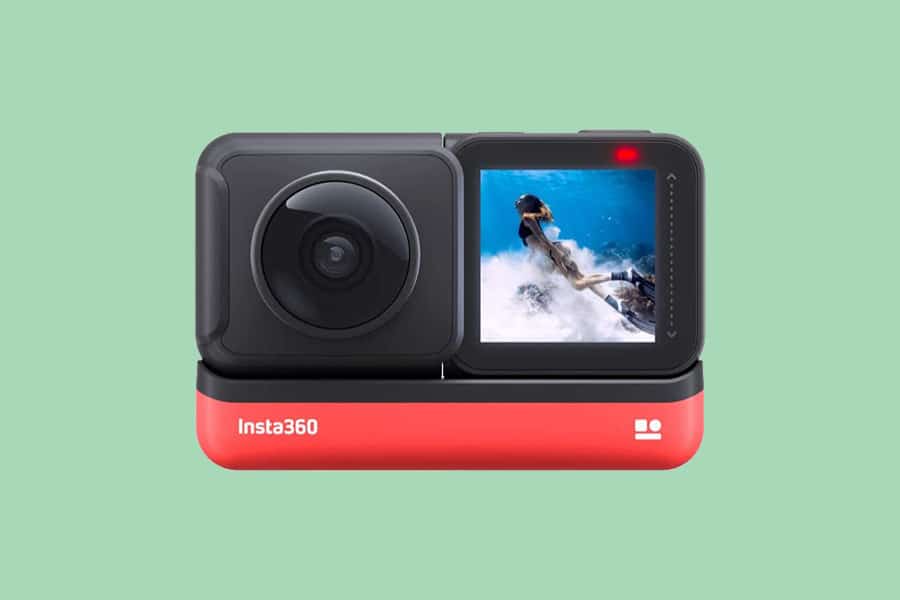
- Unique modular design
- 5.7K video quality
- Waterproof
- Vlog-friendly reversible screen
- AI-powered subject tracking
- Changing modules can be fiddly
- Only 2 mics
The Insta360 One R ticks many of the same boxes as the One X2 (see our #1 pick for best 360 camera above). In fact, at first glance, the specs and features look pretty similar.
Both offer FlowState Stabilization and horizon leveling, invisible selfie stick, AI editing via the impressively intuitive app, and excellent video quality – 5.7K video resolution for 360-degree footage. This makes it a great live 360 camera.
So what sets the two apart?
The biggest difference is that the One R is a modular camera. In other words, you can transform it into a non-360 camera via the interchangeable lenses, which gives it unique versatility.
On the downside, it has a slightly lower battery life, two microphones instead of four, and slightly duller colours.
However, don’t let those small differences between the two models deter you; as far as the best 360 cameras go the One R still offers excellent value.
Other features worth mentioning include real-time playback, HDR photos and videos, StarLapse mode for astrophotography, AI-powered subject tracking, and timeshift and slow-mo modes.
One other small thing to note is that the One R is a little fiddly when switching the modular attachments, especially if you’re using the waterproof housing which requires prior removal before you make any changes to the camera set up.
However, all up, if you’re looking for a versatile 360 camera with great image quality and a laundry list of fun features, don’t forget to check this one out.
Ricoh Theta Z1
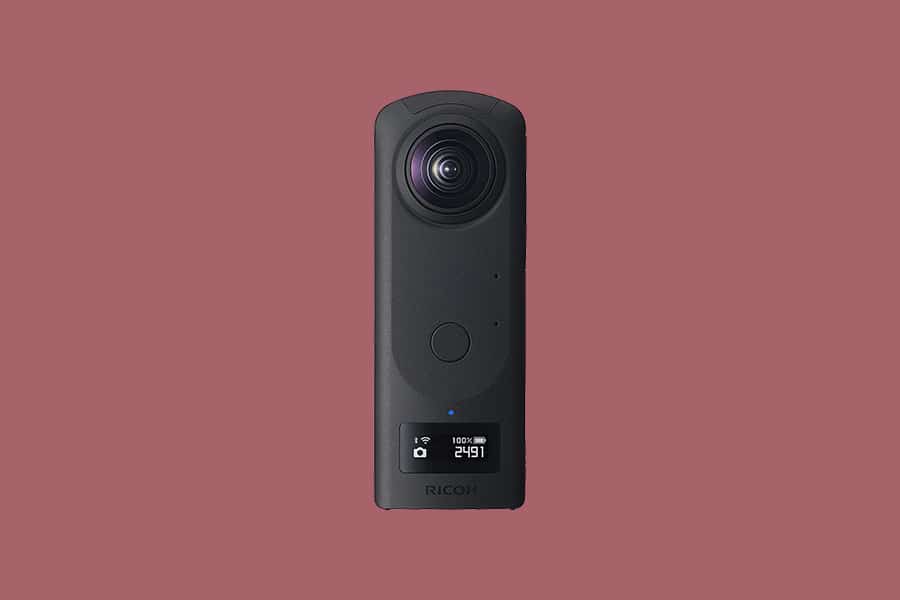
- 2 x 1-inch sensors
- HDR image processing
- Variable aperture
- Large internal memory
- Beautiful 23MP stills
- Very expensive
- Not waterproof
- Non-removable battery & average battery life
Launched back in 2019, the Ricoh Theta Z1 offered consumers the first-ever 360 camera to feature dual 1-inch back-illuminated CMOS sensors.
With most 360 cameras using 1/2.3-inch sensors, this one gains an estimated 2 stops in low light plus one extra stop of dynamic range.
The Theta Z1 offers the rare quality of a variable lens aperture, opening up the possibility of longer exposure times as well as being able to maximise available light. You even get an aperture priority mode.
Does all this equate to the most impressive image quality you can get from a 360 camera? Good question!
The Z1 allows you to shoot photos in RAW at an excellent 23MP resolution. On the other hand, the video resolution isn’t as high as some of the other best 360 cameras on this list.
While video quality definitely gains an advantage from the sensor size and variable aperture, plus an impressive image processing algorithm, it’s limited to 4K. That puts a bit of a damper Ricoh’s offering, given other top 360 cameras offer resolutions of 5.7K.
Don’t take that to mean the video quality of the Z1 is in any way poor – it’s not. This is a camera aimed at the enthusiast to pro-level market. But it does feel like a missed opportunity to really knock it out of the park.
Other things we like about the Theta Z1 are the increased internal storage space (51GB), excellent HDR image processing, 4K live-streaming, and user-friendly editing software.
Do note that none of this comes cheap: Ricoh’s best 360 camera will set you back around US$1,000.
If it fits your budget, and pro-grade sensors are a priority (especially if you’re looking to shoot more stills than video), do give it a deeper look.
GoPro Fusion

- Affordable
- Rugged body
- Waterproof
- Voice command functions
- Good battery life
- Exposed and unprotected lens
- Requires 2 x microSD cards to function
- Outdated model
The Fusion was GoPro’s first foray into the 360 camera market and, despite its affordable price point, it still makes the list of the best 360 cameras today.
You can pick up the Fusion for less than half the price of the GoPro Max. While it goes without saying that you’ll have to compromise on some specs, if you’re on a budget, it’s worth checking out what the Fusion has to offer.
Firstly, you get good quality capture with 5.2K videos and 18MP photos. Turning your spherical, 360-degree footage into traditional 1080P videos is relatively simple, though somewhat time-consuming, via GoPro’s proprietary smartphone app.
Note that the 5.2K video resolution is limited to 30fps – if you want to shoot at 60fps you’ll need to drop to 3K.
The Fusion has 12 voice-control commands that work well and are particularly useful when you’re using it as an action camera (look Mum, no hands!).
The removable battery will net you 75-80 minutes of recording time – not a bad battery life – and the durable body is waterproof to 5 meters (16 feet).
Unlike the more expensive GoPro options, this one lacks digital lenses, so you don’t have the option to change your field of view. It also lacks the PowerPano and TimeWarp Video features.
However, if you’re on a budget and happy for a slightly stripped-back version of a GoPro 360 camera, this may just be the little gadget for you.
Rylo iPhone + Android 360 Video Camera
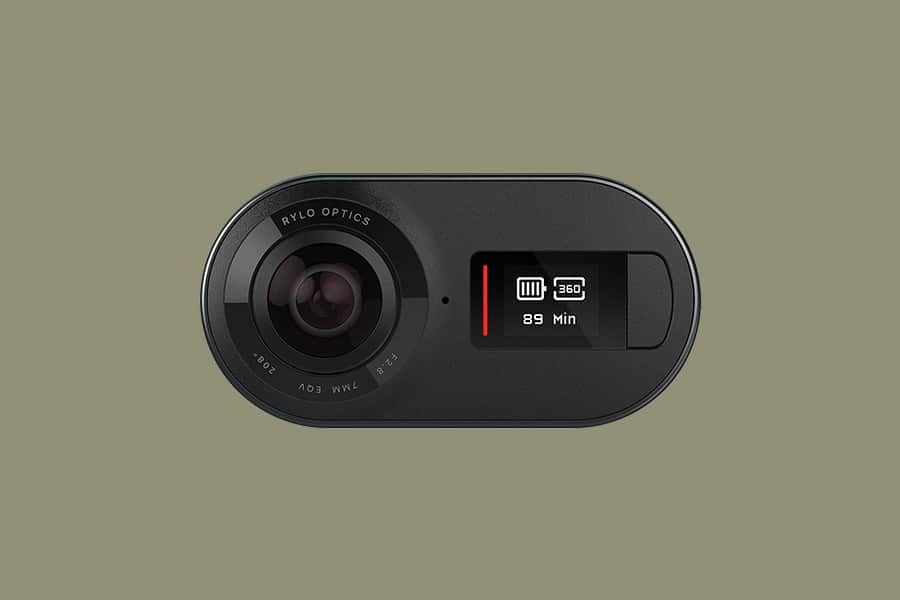
- Good stabilization
- Compact, uncomplicated body
- Fast and reliable USB connection
- User-friendly app experience
- Mount adapter included
- Performance suffers in low light
- No live-streaming
- Waterproof casing and invisible selfie stick cost extra
Who needs screens or viewfinders when you have a smartphone?!
That’s the logic behind the Rylo 360 Video Camera, which lets you use your Android or iOS device to both edit and direct your footage.
Capture 5.8K spherical video (limited to 24fps) and 6K photo panoramas using your smartphone’s touchscreen to control features like perspective and subject tracking.
After you’re done shooting, use the Points feature to tap on specific points of interest in your footage. You can then use these points to create automatic pans, reframe your shot, or track objects.
The app also makes it easy to add effects like timelapse and motion blur.
By stripping back the hardware to a small cube with just two buttons, the Rylo becomes both ultra-compact and refreshingly simple to operate.
The camera itself is unfortunately not waterproof, though housing is available at an extra cost. It also has a relatively short battery life of 60 minutes.
Another omission is live-streaming capability; if you want to live-stream video, you’ll have to go for one of the other best 360 camera options on this list.
On the plus side, image stabilization and horizon correction are both very effective, and connecting to your phone is easy with options for Bluetooth or cable (Android and iPhone cables both included). USB transfer is fast and reliable.
If the idea of controlling your 360 camera via your no-doubt-omnipresent smartphone appeals, check out the Rylo as a very worthy contender.
Samsung Gear 360
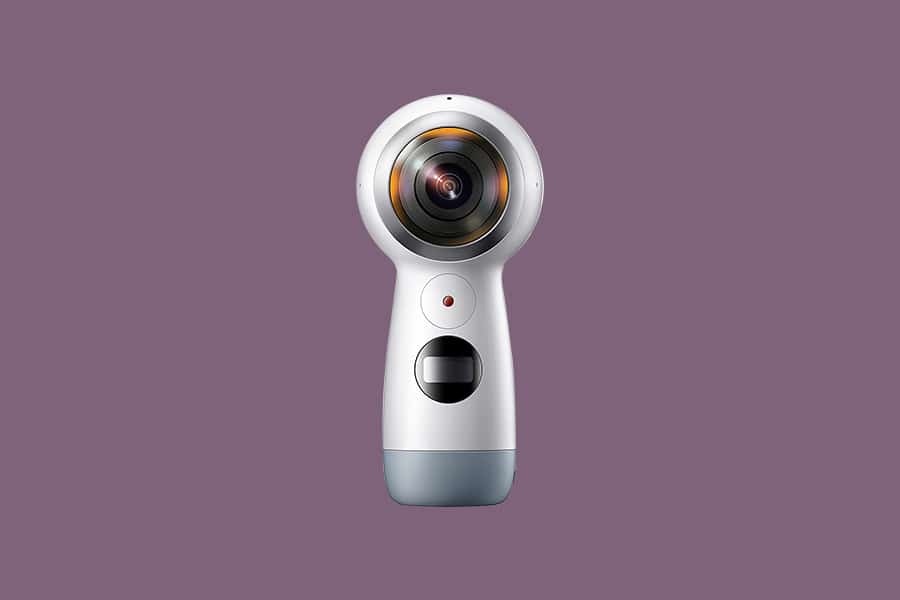
- Good value for money
- Simple operation
- Hand-holdable
- VR headset compatible
- Top-heavy design not stable
- Video resolution limited to 4K
Before we close out or list of the best 360 cameras, this option from Samsung warrants a mention.
The form factor varies from those of its competitors, with what looks like a bobbly head atop a handle-like body.
The shape has both an upside and a downside: it makes the camera easy to hold in hand, but somewhat unstable if you try to sit it on a surface that’s anything less than perfectly even.
The Gear 360 has an IP53 water-resistant rating but isn’t fully waterproof.
In terms of video resolution, this slightly older model is limited to 4K — its biggest disadvantage in a world that’s moved on to higher video quality.
Still, the lower video resolution doesn’t have to be a deal-breaker, especially if you consider that the price tag is considerably lower than many competitors.
The battery of the Samsung is non-removable but battery life is good at 90 minutes of run time. It also supports live-streaming.
If there’s one audience this 360 camera will particularly appeal to, it’s those with a Samsung VR headset. Being able to easily upload your 360-degree footage into a world of virtual reality is one of the prime reasons to consider this over other cameras.
Despite being geared towards Samsung smartphone users, the software for this 360 camera is also compatible with iOS and Mac devices.
How do I Choose a 360° Camera?
Choosing the best 360 camera for you comes down to your specific needs and priorities. Some things to consider:
- Resolution
Obviously, a higher video resolution will go a long way to ensuring you get crisp, clear footage. These days, anything below 4K is fairly obsolete in a 360 camera, and above 4K is ideal.
That said, resolution is not the whole story when it comes to image quality. Also consider factors like frame rate (minimum of 30fps is best) and dynamic range to get a fuller picture of what the quality will be.
- Size
Are you looking for a tiny action cam you can mount anywhere? Or would a larger form factor serve you just as well?
360-degree cameras come in various shapes and sizes, so look for one that matches your use case.
- Battery life
Let’s get one thing clear: battery life in any kind of tiny camera is never going to knock your socks off.
Still, battery life does vary between devices – so depending on your needs, it may be something to compare and consider.
- Features
360 cameras can be used for a range of things, from immersive VR experiences to documenting wild action-adventure sports. The features that most appeal will depend on your intent.
360 cameras can include features like timelapse, slow-mo, live-stream capability, HDR, AI-powered editing, and more.
Another specific feature to decide upon is whether you want your camera to be able to shoot standard single-lens photos and videos as well as in 360 degrees. Not all offer this capability, and it does add a layer of versatility to your purchase.
- Price
Little explanation needed here! The best 360 cameras range in price from a few hundred bucks to over a thousand. That means your budget is obviously going to be a factor.
Frequently Asked Questions
Is a 360 camera worth it?
360 cameras are definitely worth getting if they suit your needs. They’re fantastic as action cameras, for immersive real estate virtual tours, panoramas, virtual reality and more. You can also use them to challenge your creativity!
What does a 360 camera do?
360 cameras use two or more lenses to capture a complete view of everything around. These multiple views are automatically stitched together by the camera’s software to give you a spherical video.
What is the best 360 camera app for iPhone?
Here are some of the best 360 camera apps available for iPhone:
- Panorama 360 Camera by TeliportMe
- Roundme
- 360cam by GIROPTIC INC.
- DMD Panorama
Final Words
Hopefully, this guide to the best 360 cameras has helped you in your search to find the perfect device for you.
Got questions? Comments? What are your experiences to share? Let us know below!

The ultimate waterproof 360° action camera provides endless creative possibilities. Fun, easy and incredibly addictive to use. Free companion app is also great.






